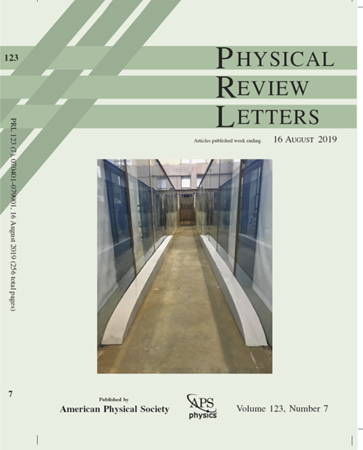间隙相的兰道分类范式
IF 8.1
1区 物理与天体物理
Q1 PHYSICS, MULTIDISCIPLINARY
引用次数: 0
摘要
我们提出了一个统一的框架来对具有分类对称性的间隙红外相进行分类,从而形成了一个广义的分类朗道范式。这适用于任何维度,并为间隙对称相的分类提供了一种简洁、全面、计算功能强大的方法。我们的关键工具是对称拓扑场论,它是一种一维高拓扑场论,有两个边界,我们选择这两个边界为拓扑边界。我们针对具有分类对称性的 (1+1)D 间隙相说明了一般想法,并提出了更高维度的扩展。本文章由计算机程序翻译,如有差异,请以英文原文为准。
Categorical Landau Paradigm for Gapped Phases.
We propose a unified framework to classify gapped infrared phases with categorical symmetries, leading to a generalized, categorical Landau paradigm. This is applicable in any dimension and gives a succinct, comprehensive, and computationally powerful approach to classifying gapped symmetric phases. The key tool is the symmetry topological field theory, which is a one dimension higher topological field theory with two boundaries that we choose to be topological. We illustrate the general idea for (1+1)D gapped phases with categorical symmetries and suggest higher-dimensional extensions.
求助全文
通过发布文献求助,成功后即可免费获取论文全文。
去求助
来源期刊

Physical review letters
物理-物理:综合
CiteScore
16.50
自引率
7.00%
发文量
2673
审稿时长
2.2 months
期刊介绍:
Physical review letters(PRL)covers the full range of applied, fundamental, and interdisciplinary physics research topics:
General physics, including statistical and quantum mechanics and quantum information
Gravitation, astrophysics, and cosmology
Elementary particles and fields
Nuclear physics
Atomic, molecular, and optical physics
Nonlinear dynamics, fluid dynamics, and classical optics
Plasma and beam physics
Condensed matter and materials physics
Polymers, soft matter, biological, climate and interdisciplinary physics, including networks
 求助内容:
求助内容: 应助结果提醒方式:
应助结果提醒方式:


